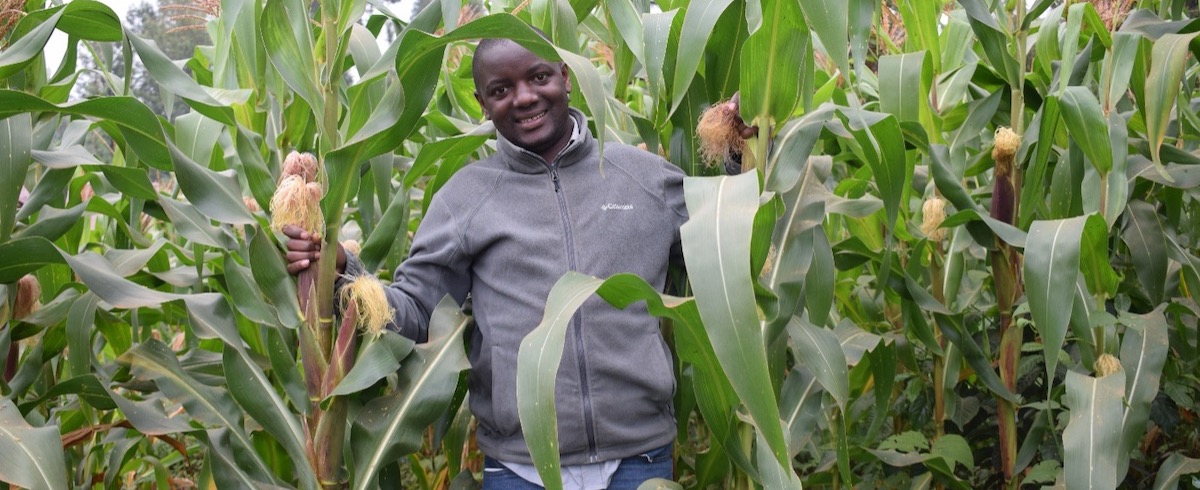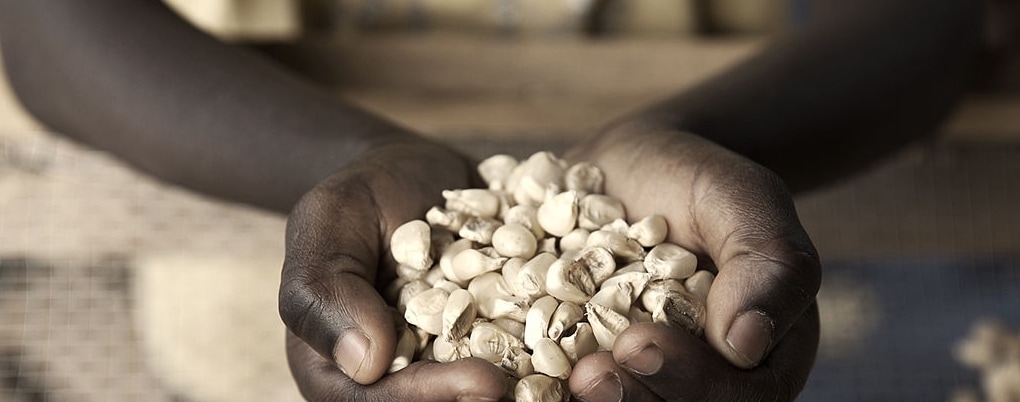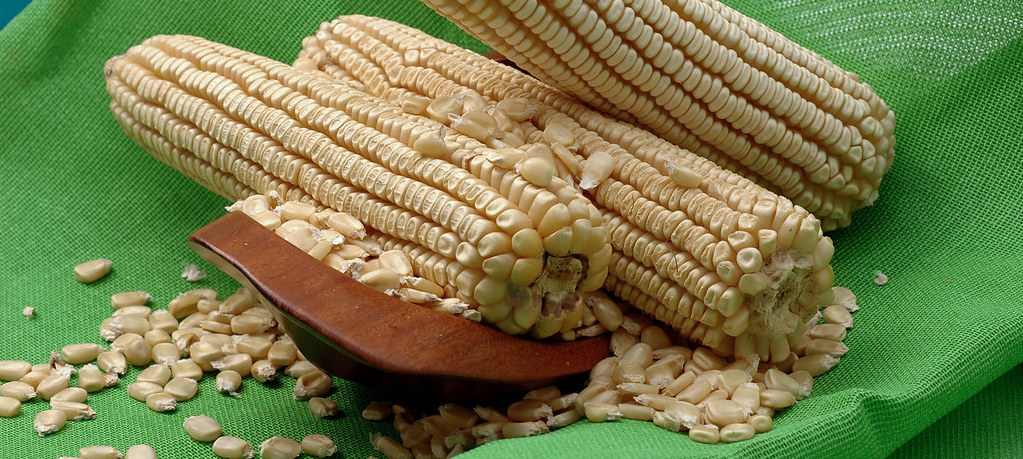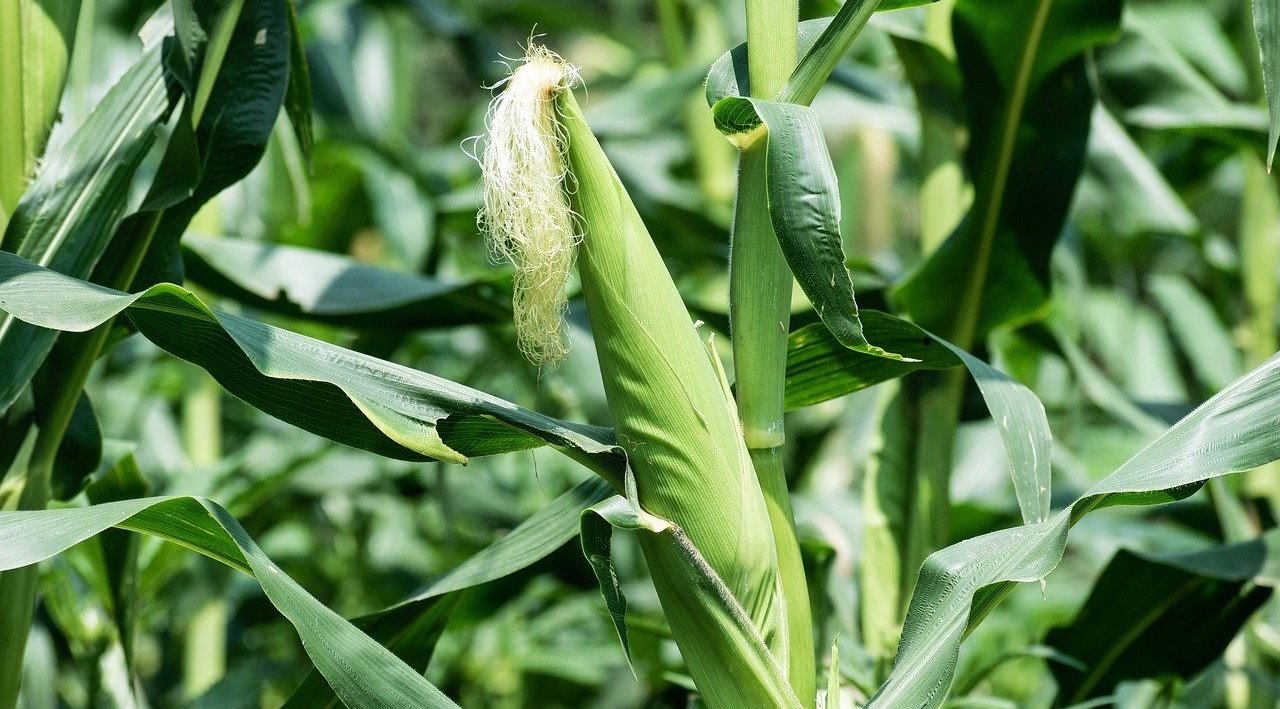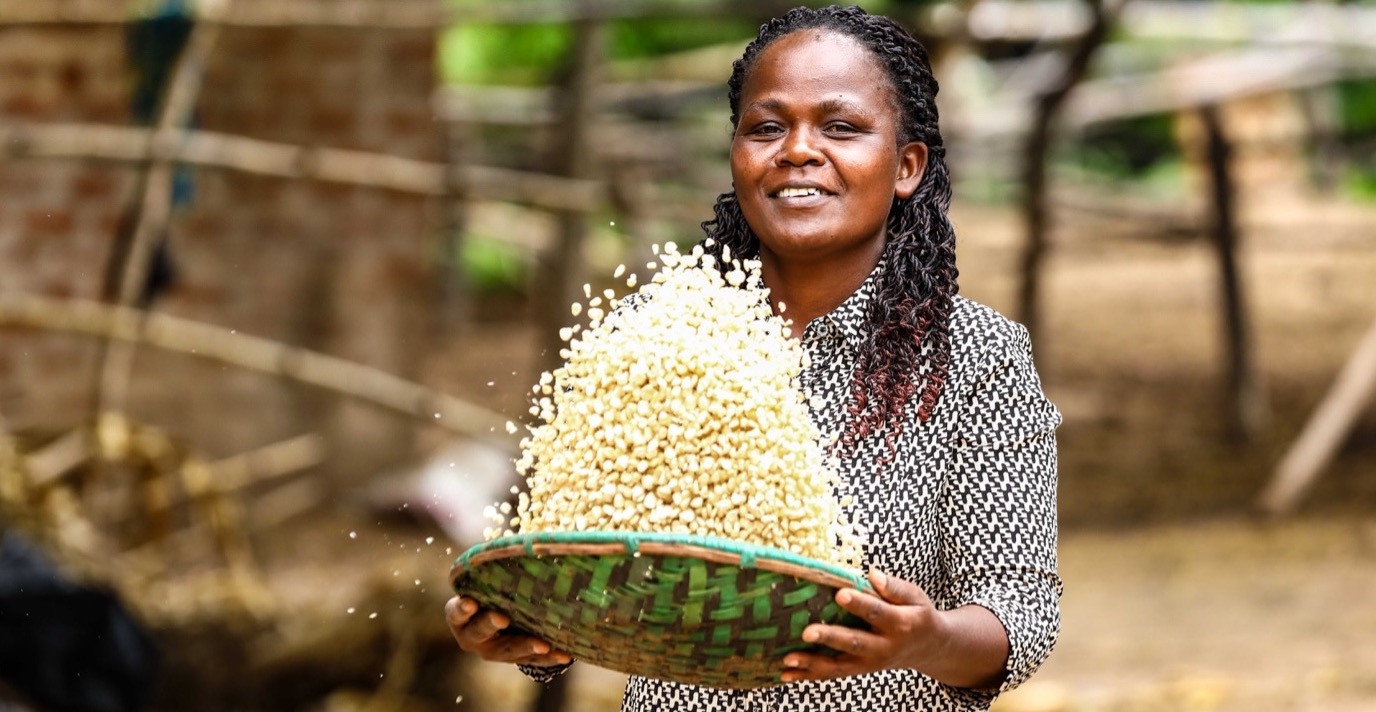Moses Mbogo at his mother demonstration plot where RA technologies were applied
When 31- year-old Moses Mbogo began farming, he adopted the very practices he had seen his parents using in maize production. He would use maize grains from the previous harvest as seed, squeezing three kernels per planting hole. It did not help matters that he was often late to plant, long after the onset of rains.
The result was low germination rates resulting in weak, stunted maize plants. Frustrated by scanty production, with no returns on investment after several months of labor, many of Moses’ neighbors abandoned maize farming for other crops.
“At the time we did not know that low production was a result of depleted soil nutrients due to years of mono-cropping and the continued application of the wrong fertility enrichers,” says Moses. “A soil test from my farm, confirmed it as acidic yet maize thrives in a neutral pH.”
He was one among the 137 village-based advisors (VBAs) recruited by the Regenerative Agriculture Project funded by the IKEA Foundation through AGRA, and implemented by Farm Africa in Embu County, Kenya. The initiative deploys appropriate regenerative agriculture practices by combining local and traditional knowledge with global best practices to realize high-yielding farming technologies.
He learned about certified seeds suitable for his region, proper land preparation, correct spacing and seed rate, spraying programs for maize and legumes, agroforestry, crop rotation, application of organic manure and mulching.
Having applied the regenerative agriculture farming approach on his demonstration plot, the results are evident not only to himself, but also to his neighbors. He can barely reach the tops of the towering maize stalks and a glance at the lush maize intercropped with climbing beans leaves one with no doubt that a plentiful harvest awaits him.
“I used a combination of manure and fertilizer, and I planted the certified seeds, one per hole applied with the correct spacing,” he adds, “while mulching suppresses weeds.”

On the other hand, the control demo plot where he did not apply the regenerative agriculture practices stands out in contrast, with retarded and unhealthy plants.
He has since trained 132 farmers (50 men and 82 women) in his village and has seen quite a number of them adopting these valuable techniques.
“Farmers favor the use of organic manure, crop rotation, contours for soil water management and agroforestry,” says Patrick Nyaga, the Farm Africa Coordinator for the Regenerative Agriculture Project.
The VBAs have been instrumental in the increased uptake of good agricultural practices by farmers through trainings as well as linkages to input suppliers for the supply of certified seeds, fertilizers and crop protection products.
“In their role as the primary distributors of inputs and as aggregators of commodities at the village level, the VBAs earn commissions, incentives that make this extension model sustainable,” he continues.
Whereas improved production creates pressure for efficient and profitable market linkages, aggregation provides opportunities for farmers to negotiate for fair prices from off-takers.
The VBAs, cooperatives and other medium-sized aggregators have undergone training in post-harvest handling techniques and proper storage, as well as developing seasonal production plans and warehouse management.


